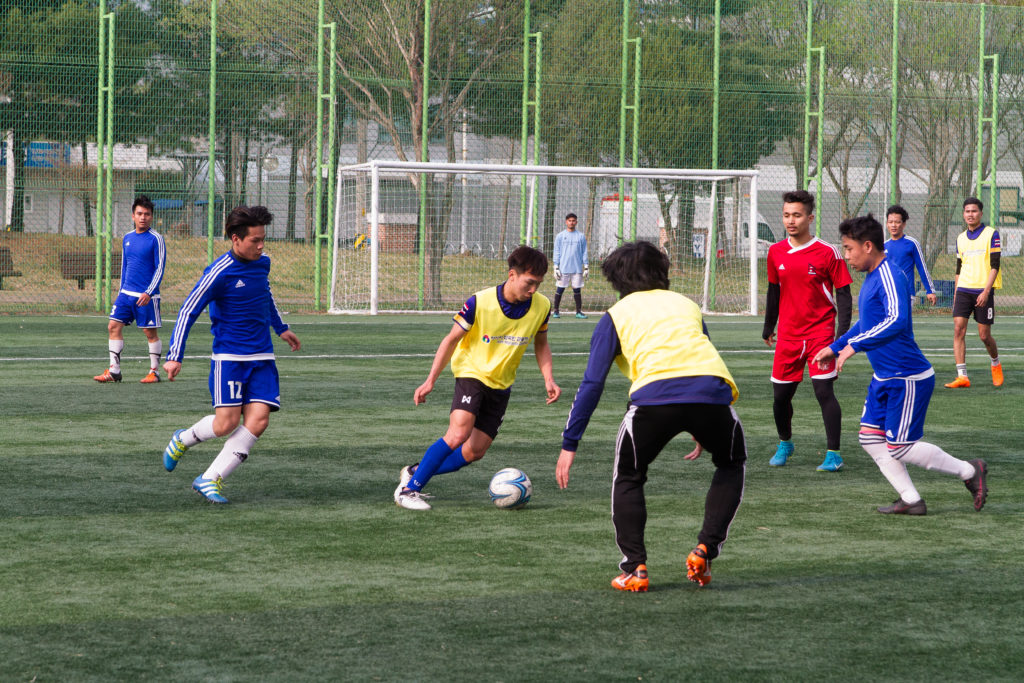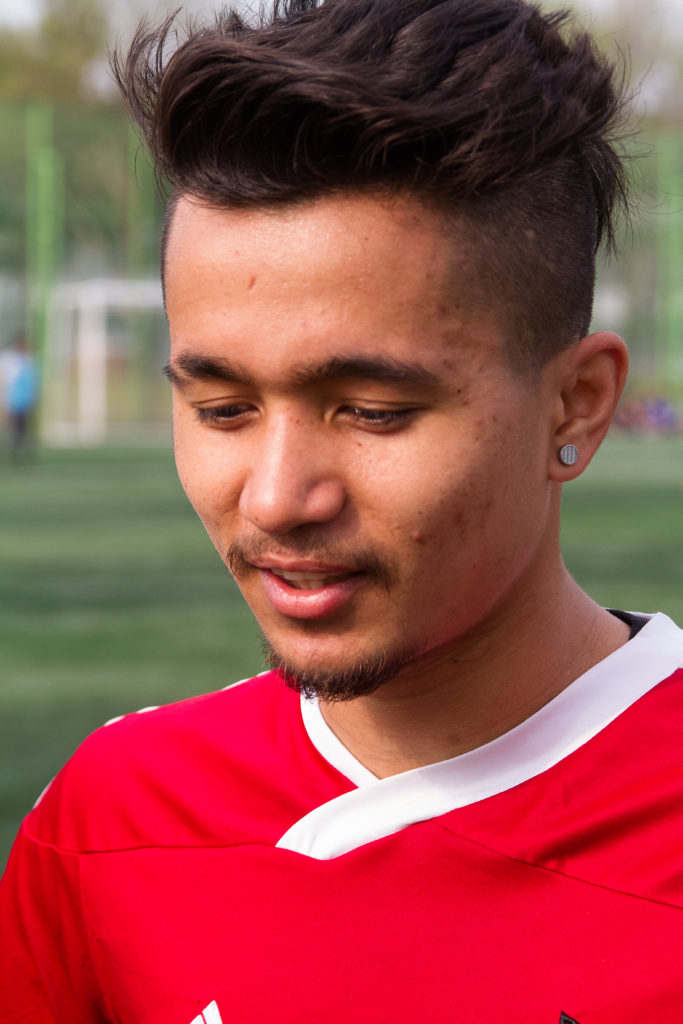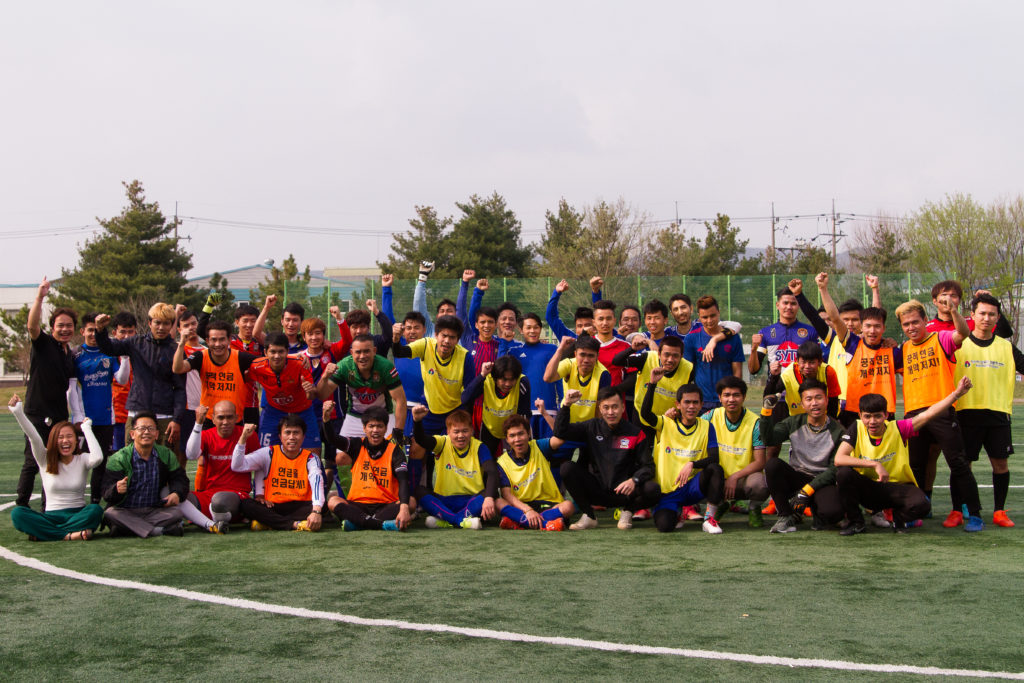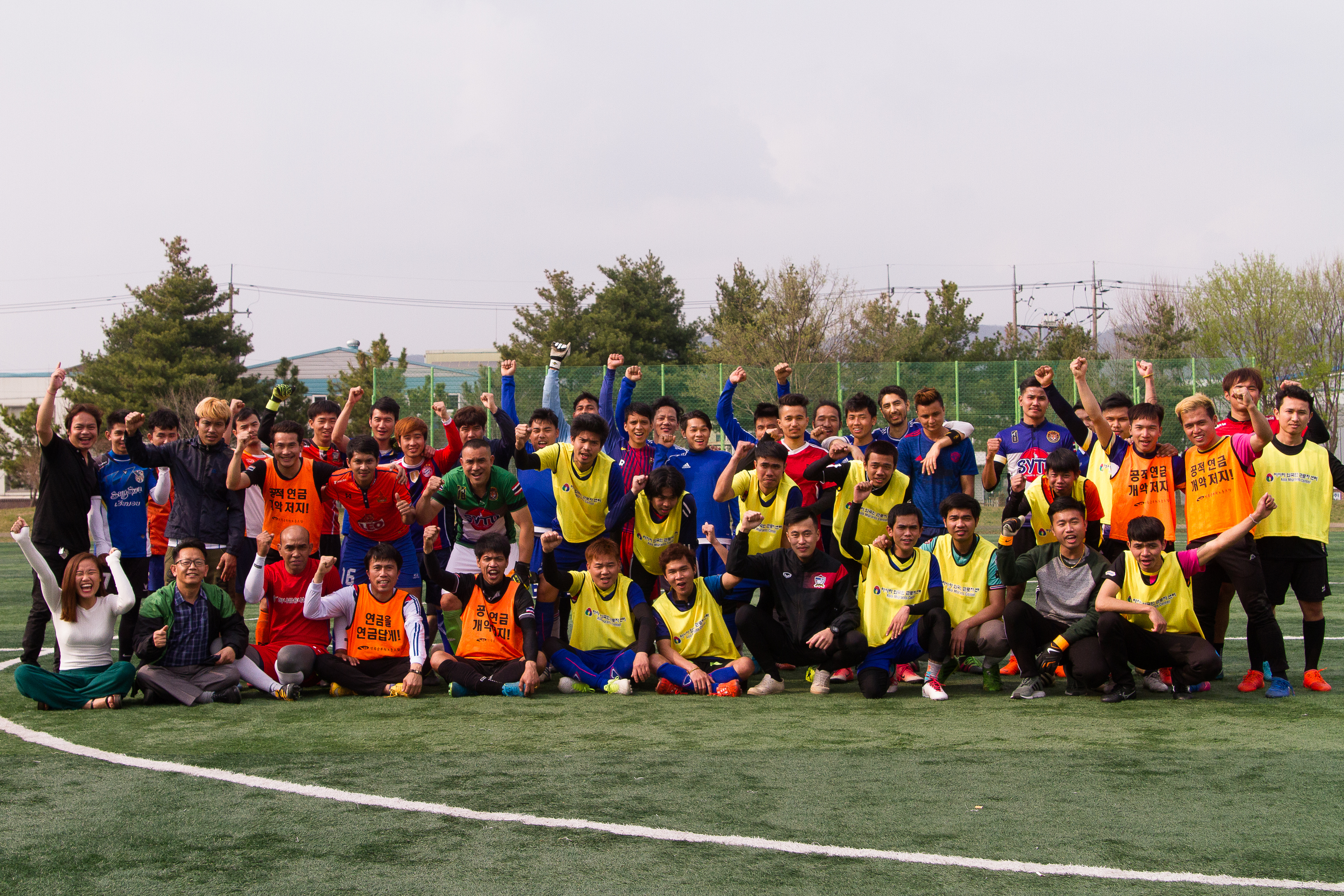Soccer for the Soul
Written by Sen Nguyen
Photographed by Ender Waters
I am not a big fan of soccer, which is rather strange because my parents are crazy about it. I remember that whenever World Cup seasons came, my parents would stay up all night (alas, the time differences from Vietnam) cheering and screaming at the TV for their favorite teams. I guess the main reason why I was not drawn into that circle was that I did not see the bigger picture of that ball rolling on the field for every player to chase after. What goes on in their heads when they are running across the field? What do they want to achieve besides a big trophy and paycheck? Is it simply a pursuit of athletic pleasure, or is there something more to the picture?
In search of a story, I brought these questions with me to the weekly soccer game organized by the Asia Migrants Center located out in Pyeong-dong (near the Songjeong Train Station). It took me two buses to get there, for a total time of one hour and 45 minutes. Every time I got on and off the bus, the scenery changed. It felt like I was heading to another city, as even the buses were different. The Gwangju I know seemed to be left behind. By contrast, Pyeong-dong is known as the area where most migrant workers in Gwangju live due to its plethora of factories and cheap housing.

I was first met by the director of the Asia Migrants Center when I arrived at the field. He was riding a motorbike around the field at a slow speed, checking that everything was okay. Different groups of players were stretching, chatting, and practicing at three corners of the field, getting ready for the big game. Kim Bok-ju founded the center in March 2007 and decided to organize regular soccer games and establish the Asia Migrants Football Championship the following year, made up of 32 teams from all over Korea and including 12 nationalities.
“Last year, the Thai migrant workers’ team from Pyeong-dong, Gwangju, brought home the championship trophy. The 9th championships have passed, and we are still going strong,” Kim said.
That brought my attention back to the game, as the Thai and Nepalese teams were playing against each other that day. The winner of last year’s championship consisted of good-looking, tanned, and athletic fellas, but that did not at all diminish the attention their opponents were garnering. After their loss to the Thai team in last season’s championship, would I get to see a hungry Nepalese team eager for victory?

The Nepalese team was looking genuinely sharp, leaving the Thai team no real chance to control the ball. What an impressive start!
“At first people were shy to come and play, but the team leaders encouraged them,” Kim said. I got a chance to talk with both team leaders that day, whom I will refer to using their initials. SA is a 32-year-old native of Thailand who came to Korea in 2015 under Korea’s Employment Permit Program.
“My friends introduced me to the weekly game, and I have been coming ever since. It feels very good to play [soccer] with my friends, [meet] new people, have a chat, [and] have some food and drinks together,” SA said.
Khadka, who came to Korea from Nepal in 2014 when he was 20 years old, echoed the same joy for playing sports and letting his hair down after a workweek at his factory. “I will go home to visit my family next year, but I think I will be back to Korea,” Khadka said.
At this point, the Thai team’s game plan appeared to overcome the pressure with some impressive offense – all it took was one long ball upfield to give Number 12 a clean shot.
“The migrant workers get along with each other well here. In the past, there were wars between our countries, but it does not really matter now. We don’t fight with each other here,” Kim added. He believes that such a regular sporting activity helps elevate the players’ moods, keeping them physically healthy and mentally positive. “Before, sometimes when they felt bored or sad, … they just went drinking, and now playing soccer seems like a better thing to do.”

Migrant workers come to Korea to fill job vacancies that university-educated Koreans are reluctant to take, including agriculture/stockbreeding, manufacturing, offshore/inshore fishery work, fish breeding, and construction work. Doing what is known as “3D” work (i.e., work that is dirty, difficult, and dangerous) these laborers are often neglected and looked down upon in Korea. Most of them come from South and Southeast Asia. There are up to 300,000 migrant laborers in South Korea, in comparison with around 16,000 foreign language teachers. Yet, the common image of foreigners in Korean society is often Westerners from English-speaking countries. A more profound understanding of the laborers’ lives helps us widen our own perspective of Korean life, which is no longer comprised solely of Korean people, but everyone from everywhere who has come to this country searching for a better life.
After saying goodbye to Kim and both teams, I walked away from the field, only to hear a thunderous cry of joy as one of the teams just made a goal. I did not really care to note down who won, because I was too busy being mesmerized by the euphoria that consumed the whole area. They did not appear to be migrant workers to me at that point – just humans having fun and kicking some balls. That is how I found my way back to soccer, in search of a collective humanity.
THE AUTHOR
Sen is a graduate student and a vigorous reader, whether it is a book or people. She comes from Hanoi, Vietnam, but her home is wherever her heart is.







